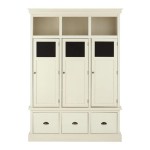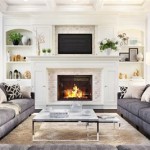Basic Home Decorating Tips to Elevate Your Living Space
Home decorating can feel overwhelming, especially with the myriad of styles and trends available. However, approaching the process with a few basic principles in mind can transform a house into a personalized and comfortable home. This article outlines fundamental decorating tips to guide individuals through the process of enhancing their living spaces, regardless of their budget or experience level.
Understanding the Fundamentals: Space Planning and Functionality
Before purchasing any decorative items, it is critical to assess the existing space. This involves considering the room's dimensions, natural light sources, and intended function. Space planning is the process of strategically arranging furniture and fixtures to optimize flow and usability. A well-planned space feels open, inviting, and serves its purpose effectively.
The first step in space planning is to measure the room accurately. This includes the length, width, and height of the room, as well as the dimensions of any existing furniture that will be incorporated into the design. These measurements serve as a foundation for determining the appropriate size and placement of new furnishings.
Consider the room's natural light. Windows are vital sources of daylight, and furniture should be arranged to maximize its benefits. Avoid blocking windows with large pieces of furniture, as this can make the room feel dark and cramped. Instead, position seating areas and workspaces near windows to take advantage of natural light.
The intended function of the room is another crucial factor. A living room designed for relaxation and entertainment will require different furniture and layout compared to a home office or a children's playroom. Prioritize the activities that will take place in the room and select furniture and accessories that support those activities. For example, a living room might benefit from a comfortable sofa, armchairs, and a coffee table, while a home office would need a desk, chair, and adequate storage solutions.
Traffic flow is an essential element of space planning. Ensure that there is enough space for people to move freely around the room without bumping into furniture or feeling constricted. Create clear pathways between doorways and seating areas. Arrange furniture in a way that encourages natural movement and avoids creating bottlenecks.
The concept of focal points is important in space planning. A focal point is a visually prominent element that draws the eye and anchors the room. It could be a fireplace, a large window with a view, a statement piece of artwork, or an architectural feature. Arrange furniture around the focal point to create a sense of balance and harmony. For example, in a living room with a fireplace, the sofa and armchairs can be positioned facing the fireplace to create a cozy and inviting seating area.
Scale and proportion are also key considerations. Ensure that furniture is appropriately sized for the room. A large sofa in a small room can overwhelm the space, while small furniture in a large room can look insignificant. Consider the height of the ceiling when choosing furniture. Tall ceilings can accommodate taller furniture, while low ceilings may require lower-profile pieces.
Before making any purchases, consider creating a floor plan. This can be done using online tools or even on paper. Experiment with different furniture arrangements and visualize how the space will look and feel. This will help to avoid costly mistakes and ensure that the final design is functional and aesthetically pleasing.
Color Theory and its Impact on Ambiance
Color plays a significant role in home decorating, influencing mood, perception of space, and overall aesthetic. Understanding basic color theory and how different colors interact allows for creating a harmonious and visually appealing environment. There are several color schemes that can effectively be employed in interior design. Common color schemes are monochromatic, analogous, complementary, and triadic.
Monochromatic color schemes utilize different shades and tints of a single color to create a cohesive and unified look. This approach is often used to create a calming and serene atmosphere. For example, a living room could feature different shades of blue, ranging from light sky blue on the walls to deep navy blue on the sofa, with accents of white or cream to add contrast.
Analogous color schemes involve using colors that are adjacent to each other on the color wheel. This creates a harmonious and visually pleasing effect because the colors naturally blend together. An example of an analogous color scheme is combining blue, blue-green, and green. This palette can be used in a bedroom to create a relaxing and nature-inspired environment.
Complementary color schemes use colors that are opposite each other on the color wheel. This creates a high-contrast and dynamic look. Complementary colors can be used to create a focal point or to add visual interest to a room. For instance, pairing blue and orange can bring vibrancy to a living room. However, it is essential to use complementary colors carefully, as too much contrast can be overwhelming. A good approach is to use one color as the dominant shade and the other as an accent.
Triadic color schemes involve using three colors that are equally spaced on the color wheel. This creates a balanced and vibrant look. Examples of triadic color schemes include red, yellow, and blue, or green, purple, and orange. Triadic schemes are often used in children's rooms or in spaces where a lively and energetic atmosphere is desired.
The choice of colors should also consider the room's lighting conditions. Natural light can affect the way colors appear. Colors tend to look brighter and more vibrant in natural light, while they may appear darker and more muted in artificial light. It is advisable to test color swatches in the room at different times of the day to see how the light affects their appearance.
Consider the psychological effects of color when choosing a palette for a room. Certain colors are known to evoke specific emotions and feelings. For example, blue is often associated with calmness and tranquility, making it a good choice for bedrooms or bathrooms. Green is associated with nature and balance, making it suitable for living rooms or offices. Yellow is associated with energy and optimism, making it a good choice for kitchens or dining rooms. Red is associated with passion and excitement, but it should be used sparingly, as too much red can be overwhelming.
Neutral colors, such as white, gray, beige, and brown, are versatile and timeless choices for home decorating. They can be used as a backdrop for other colors or as the primary color scheme. Neutral colors create a sense of calm and sophistication, and they can make a room feel larger and more open. They also provide a blank canvas for adding pops of color through accessories and artwork.
Incorporating Texture and Pattern for Visual Interest
Texture and pattern are essential elements of interior design that add depth, visual interest, and personality to a space. By thoughtfully incorporating different textures and patterns, it is possible to create a space that is both visually appealing and tactilely engaging. Texture refers to the surface quality of an object, while pattern refers to the repetition of a design or motif.
Using texture involves incorporating materials with varying surface qualities to create visual contrast and sensory appeal. For example, a living room might feature a combination of smooth surfaces, such as a glass coffee table or a lacquered cabinet, and rough surfaces, such as a woven rug or a knitted throw blanket. This juxtaposition of textures adds depth and interest to the room, preventing it from feeling flat or monotonous.
Different textures can evoke different feelings and associations. Smooth textures, such as silk or polished metal, often convey a sense of elegance and sophistication, while rough textures, such as burlap or distressed wood, can evoke a sense of warmth and rusticity. Consider the overall aesthetic of the space and choose textures that complement that aesthetic.
Natural textures, such as wood, stone, and leather, can bring a sense of warmth and organic beauty to a room. These materials often have inherent variations and imperfections that add character and visual interest. Incorporating natural textures can help to create a connection to the outdoors and to ground the space in nature.
Pattern is another powerful tool for adding visual interest to a room. Patterns can be used on walls, floors, furniture, and accessories. They can range from subtle and understated to bold and dramatic. When choosing patterns, consider the scale, color, and style of the pattern, as well as how it will relate to the other elements in the room.
Scale is an important consideration when choosing patterns. Large-scale patterns can make a small room feel even smaller, while small-scale patterns can get lost in a large room. Choose patterns that are appropriately sized for the space and for the other elements in the room.
Color is another key factor to consider. Patterns can be used to introduce new colors into a room or to reinforce the existing color scheme. Consider the color palette of the room and choose patterns that complement that palette. It is also important to consider the contrast between the pattern and the background. High-contrast patterns can be bold and eye-catching, while low-contrast patterns can be more subtle and understated.
Mixing patterns can be a great way to add personality and visual interest to a room. However, it is important to mix patterns carefully to avoid creating a chaotic or overwhelming look. A general rule of thumb is to choose patterns that have a common color or theme, but that vary in scale and style. For example, a room might feature a large-scale floral pattern on the curtains, a medium-scale geometric pattern on the throw pillows, and a small-scale striped pattern on the rug. By varying the scale and style of the patterns, it is possible to create a cohesive and visually interesting look.
Layering textures and patterns creates a sense of depth and complexity. This can be achieved by combining different materials and patterns in a way that is visually stimulating. For example, a bed might feature a combination of smooth cotton sheets, a quilted duvet cover, and a textured throw blanket. This layering of textures and patterns adds visual interest and makes the bed feel cozy and inviting.

10 Simple And Affordable Home Decor Ideas Omojo

10 Simple And Affordable Home Decor Ideas Omojo

Designing And Decorating A Room On Budget Designcafe

10 Easy Diy Home Décor Ideas For Your Place The Trend Spotter

36 Diy Home Decor Projects Easy Craft Ideas For Decorating

9 Ways To Minimalist Decor That Will Make Your Home Clutter Free

How To Design A Room Like An Interior Designer Step By Greenhouse Studio

Low Budget Home Design Affordable Decor Ideas For Every

60 Easy And Chic Home Decor Ideas To Try From Designers
:strip_icc()/cdn.cliqueinc.com__cache__posts__81867__undefined-81867-1536620650347-image.700x0c-4ded8a03d11f4035ba3ee9cba94ddcff.jpg?strip=all)
23 Ways To Make Your Home Look More Expensive
Related Posts







